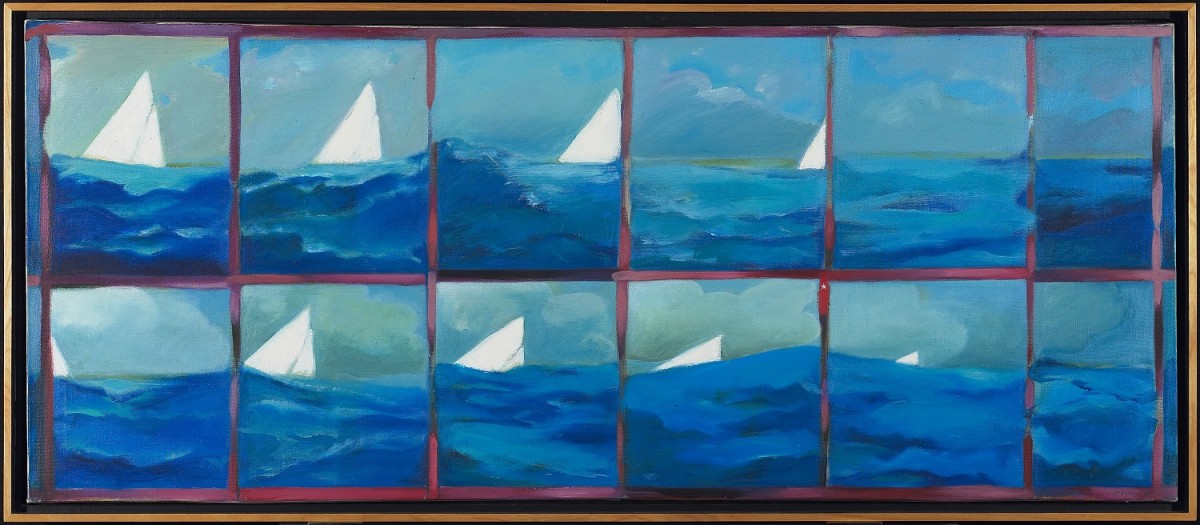Dive into Joyce Wieland

Joyce Wieland, Boat Tragedy, 1964. Oil on canvas, 50.2 x 121.9 cm. Gift from the Toronto Dominion Bank, 1965. © 2018 Art Gallery of Ontario
A pioneering feminist artist and the first living female artist to receive a solo exhibition at the AGO, Joyce Wieland was a prominent and influential figure in the Canadian art scene from the ‘60s to the ‘80s. Last week we caught up with Georgiana Uhlyarik, Fredrik S. Eaton Curator, Canadian Art and Renée van der Avoird, Assistant Curator, Canadian Art, as they were installing three works by Wieland in the newly renamed, revitalized and reopened J. S. McLean Centre for Indigenous & Canadian Art.
Hanging opposite Ruth Cuthand’s Don’t Breath, Don’t Drink (2016), Wieland’s The Water Quilt (1970–71) offers dread and vulnerability rather than the comfort and safety a quilt usually represents. Each square, hand-embroidered with an Arctic flower, conceals startling excerpts from James Laxer’s 1970 book The Energy Poker Game. Laxer’s book, which outlined schemes by American corporations to seize control of northern waterways in Canada, made a profound impact on Wieland.
“These works are a real reaction to what she was seeing around her,” Georgiana explains. “In the 1960s, Wieland had a political awakening. Having been locked out of the ‘boys’ club’ of the art world, she started using humour and popular culture to undermine patriarchy and capitalism.”
Installed adjacent to each other, Boat Tragedy (1964) and Flick Picks #4 (1963) are both part of Wieland’s series of disaster paintings. Laid out like filmstrips, the series explores the relationship between tragedy and spectacle.
“There is a chilling simplicity to these works,” says Renée, as she moves between the paintings. “Joyce Wieland’s cinematic eye is never far away, and the disaster that is about to happen, unfolds so gracefully, it’s almost more horrific.”
Watch the video below to see Georgiana and Renée speak about Wieland’s activism, her groundbreaking achievements and why it was important to hang these works in the newly re-opened J. S. McLean Centre for Indigenous & Canadian Art.
Are you an AGOinsider yet? If not, sign up to have stories like these delivered straight to your inbox every week.
The installation of the AGO’s Indigenous and Canadian Collection is generously supported by:
The installation of the AGO Indigenous & Canadian Collection is generously supported by
The installation of the AGO Indigenous & Canadian Collection is generously supported by
